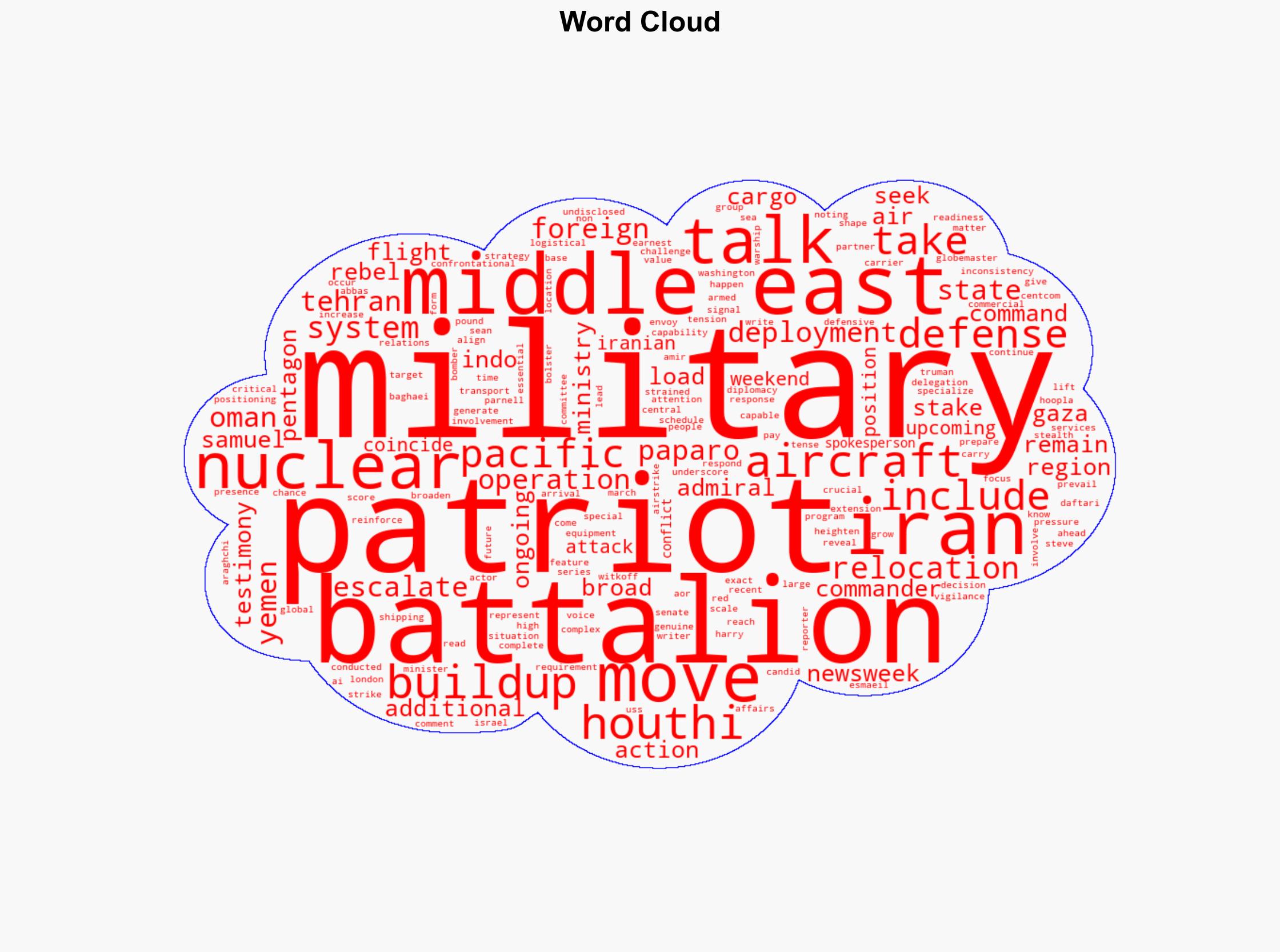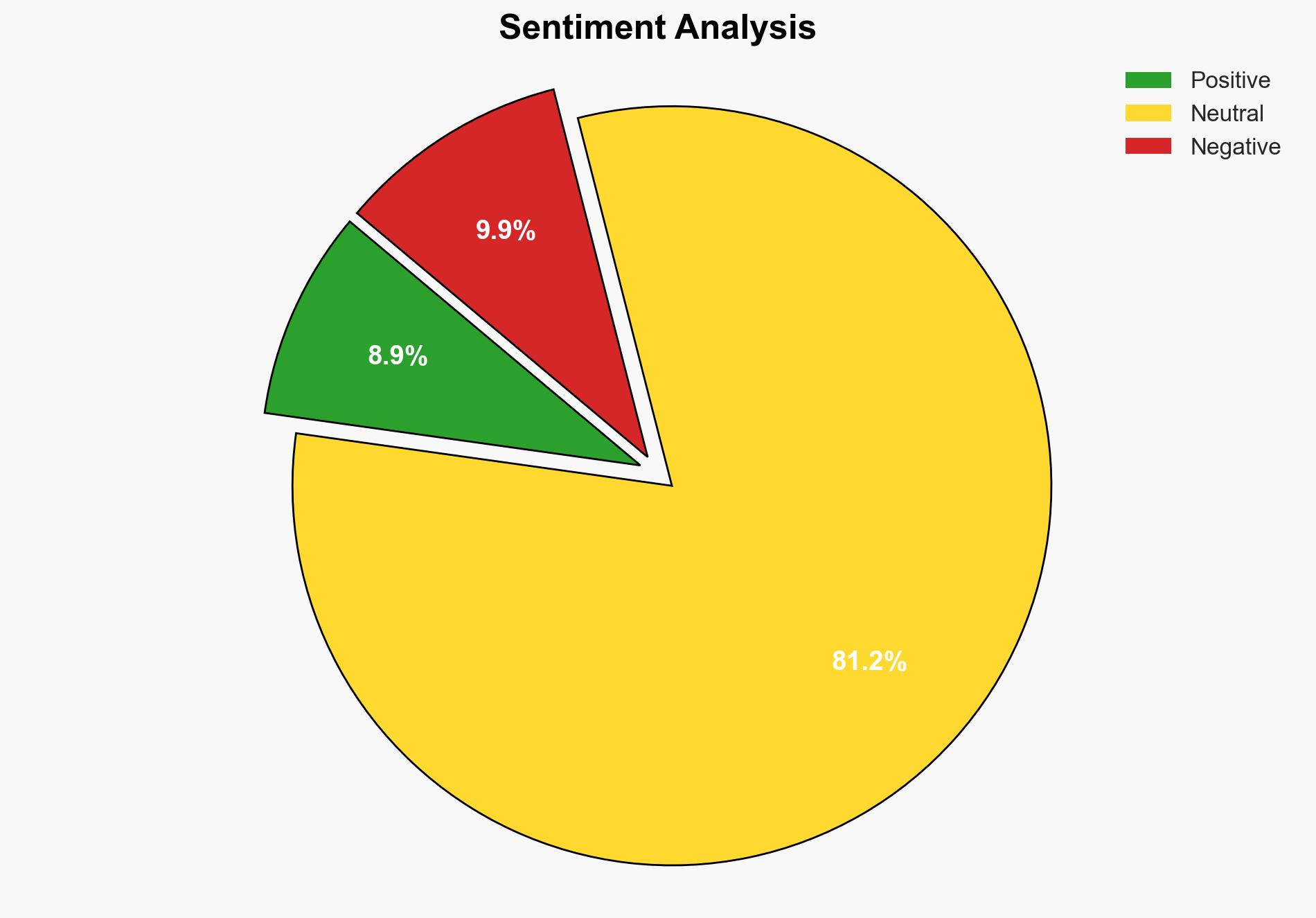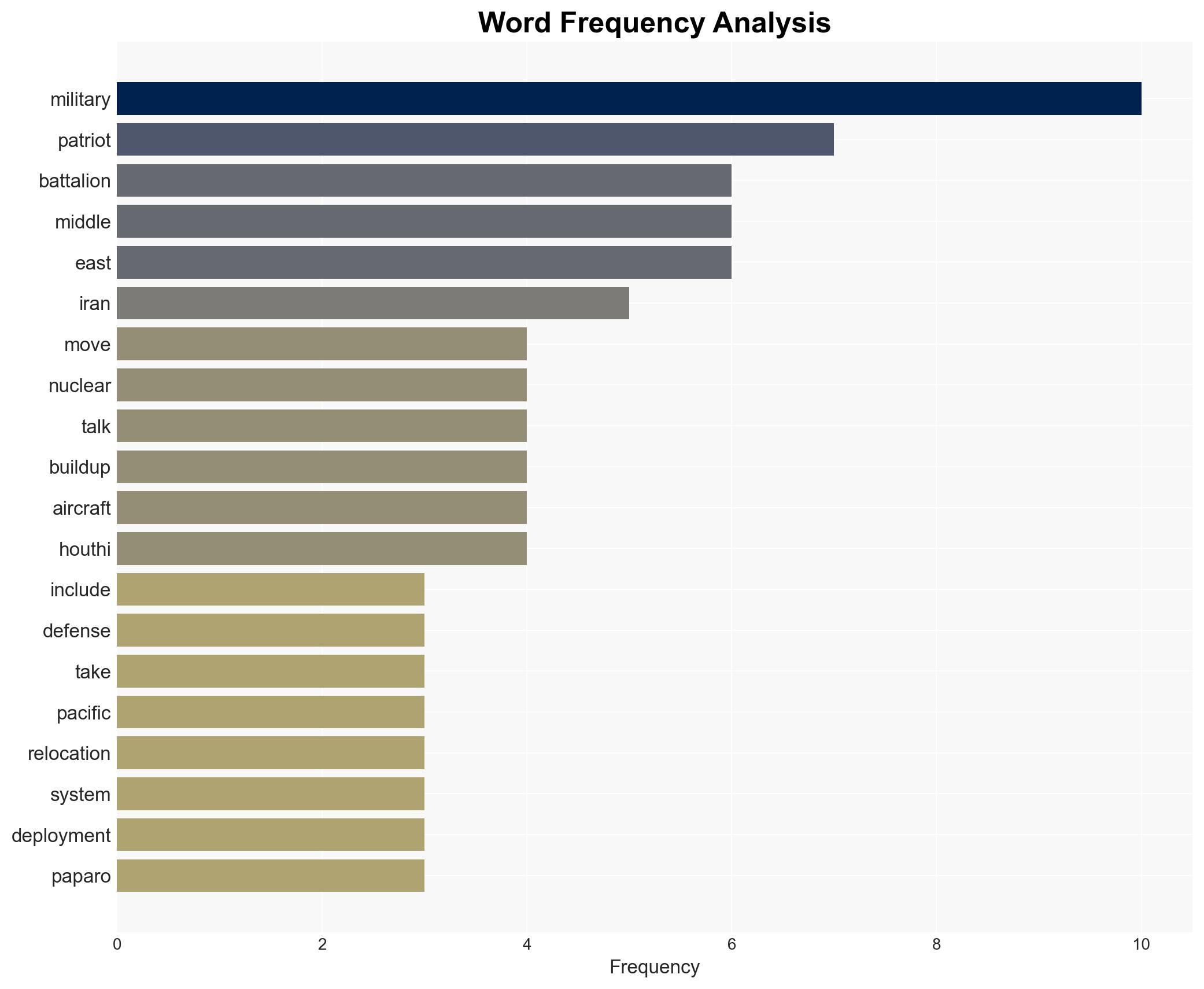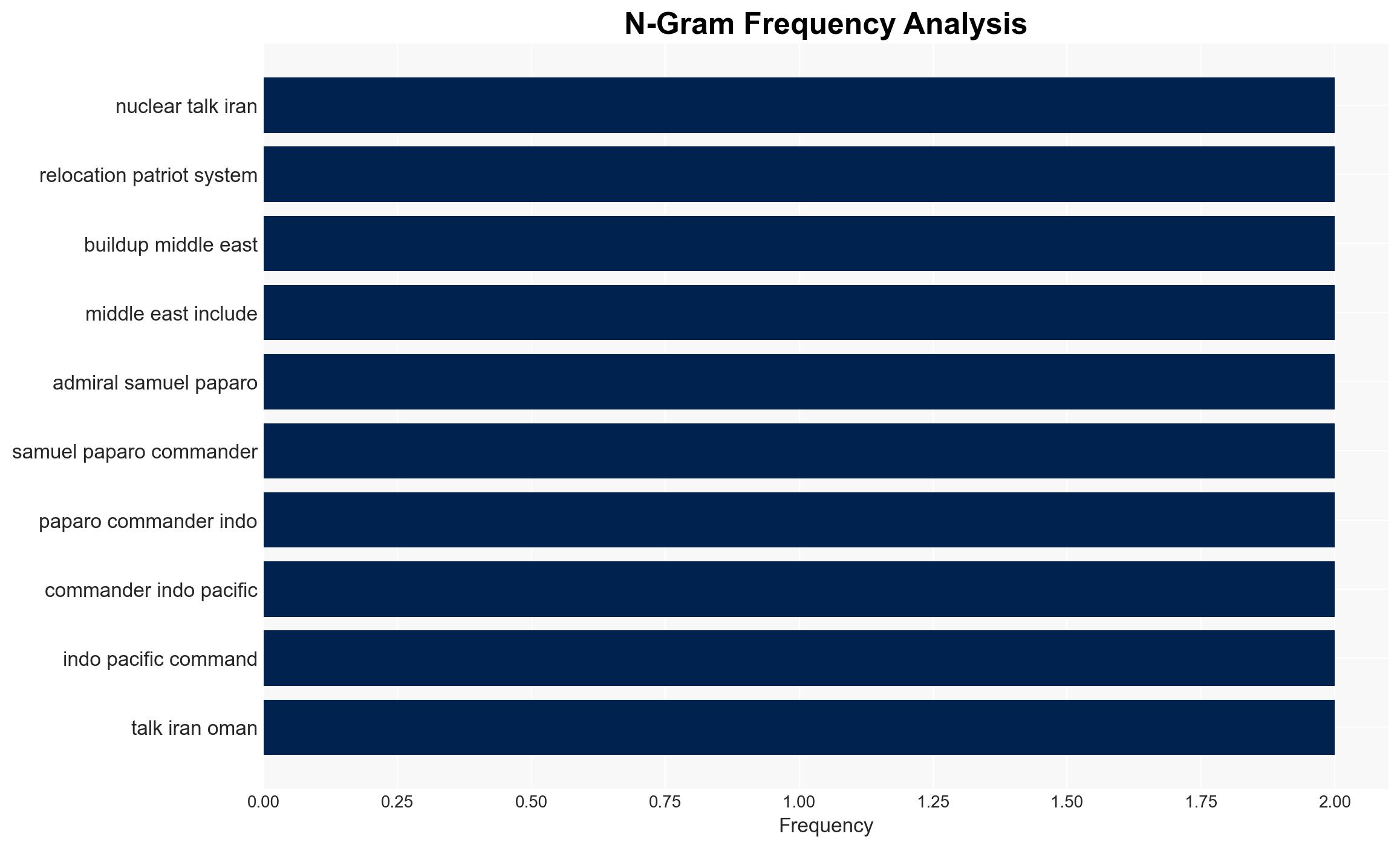US Bolsters Military in Case Iran Talks Fail – Newsweek
Published on: 2025-04-11
Intelligence Report: US Bolsters Military in Case Iran Talks Fail – Newsweek
1. BLUF (Bottom Line Up Front)
The United States has significantly increased its military presence in the Middle East by relocating a Patriot air defense battalion and additional military assets. This strategic move aims to bolster defensive capabilities amidst escalating tensions with Iran and other regional actors. The buildup coincides with upcoming nuclear talks in Oman, highlighting the critical nature of these negotiations. Stakeholders should prepare for potential military and diplomatic developments.
2. Detailed Analysis
The following structured analytic techniques have been applied for this analysis:
General Analysis
The U.S. military’s relocation of a Patriot air defense battalion, involving 73 C-17 Globemaster flights, underscores a significant logistical operation aimed at enhancing regional defense capabilities. This move is part of a broader military buildup, including the extension of the USS Harry S. Truman deployment and the addition of strike groups with B-2 stealth bombers and A-10 attack aircraft. The timing aligns with high-stakes nuclear talks with Iran, indicating a dual approach of diplomatic engagement backed by military readiness.
3. Implications and Strategic Risks
The increased U.S. military presence poses several strategic risks and implications:
- Heightened tensions with Iran could lead to military confrontations, impacting regional stability.
- Potential retaliatory actions by Iran or allied groups, such as the Houthi rebels, could disrupt commercial shipping and energy supplies.
- The military buildup may strain U.S. relations with regional partners and adversaries, complicating diplomatic efforts.
4. Recommendations and Outlook
Recommendations:
- Enhance diplomatic efforts to de-escalate tensions and seek a peaceful resolution to nuclear negotiations.
- Strengthen intelligence-sharing with regional allies to monitor potential threats and coordinate responses.
- Invest in technological advancements to improve defense capabilities and reduce logistical challenges.
Outlook:
Best-case scenario: Successful nuclear talks lead to a reduction in regional tensions and a phased withdrawal of U.S. military assets.
Worst-case scenario: Breakdown in negotiations results in military escalation, impacting global energy markets and regional security.
Most likely scenario: Ongoing diplomatic efforts continue amidst a sustained U.S. military presence to deter potential threats.
5. Key Individuals and Entities
The report mentions significant individuals and organizations, including Samuel Paparo, Abbas Araghchi, and Steve Witkoff. These individuals play crucial roles in the unfolding events and negotiations.





